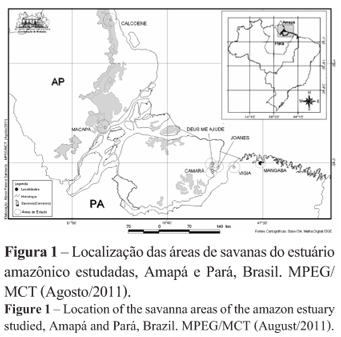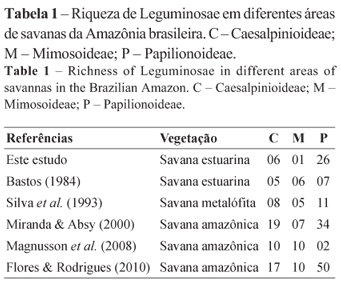The savannas of the Amazon River estuary are poorly studied formations, extending through the northern Brazilian states of Pará and Amapá. These areas are considered to be of extreme importance for biological conservation because of their great floristic diversity in which the Fabaceae figures as a dominant component. In order to characterize the diversity of this family in savannas, botanical collections were carried out between May-June of 2010 and June-July of 2011, as well as herbarium research undertaken in the MPEG and IAN herbaria in Belém, Brazil. The Leguminosae were represented by 33 species in 19 genera. The subfamily Papilionoideae showed the largest number of species (26) and genera (16), followed by Caesalpinioideae (one genus with six species) and Mimosoideae (one species). Among the studied species in the area, there was a predominance of herbs, woody vines (lianas), and shrubs, with only two species of trees. The most species-rich genera in the area were: Chamaecrista (6), Aeschynomene, Clitoria, and Stylosanthes (3 spp. in each genus). Tephrosia sessiliflora was registered as a new record for the state of Amapá.
Amazonian; diversity; Fabaceae; non-forest vegetation








